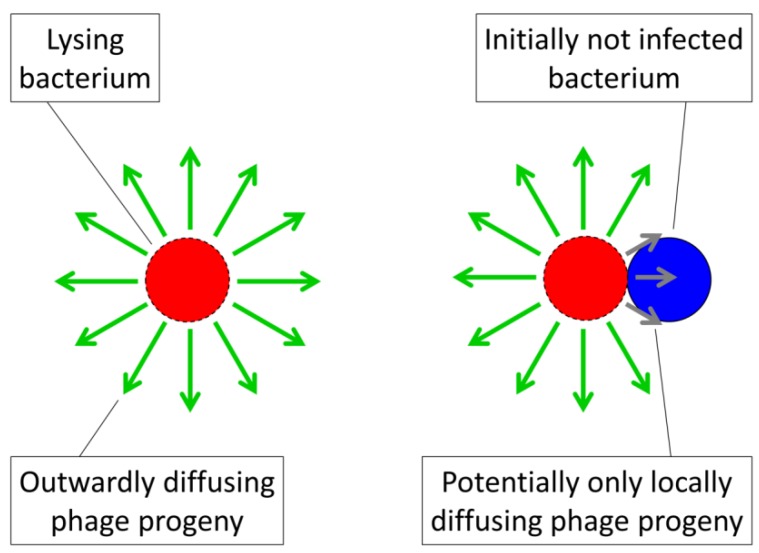Figure 3.
Illustration of the tendency of phages to display biases towards acquisition of locally available bacteria. Here shown to the right is phage acquisition of a bacterium (blue) that is found as part of the same arrangement as a lysing bacterium (red with dashed border). The green arrows represent outwardly diffusing phage progeny released upon bacterial lysis while the shorter, gray arrows illustrate the tendency of those phages that are released immediately adjacent to an uninfected bacterium to encounter that bacterium. Contrasting this second bacterium looming large in the vicinity of an adjacent phage burst, even at a high plankton bacterial density of 108 per mL, each free bacterium (left) occupies a total environmental volume of 104 µm3 (1 cm = 104 µm, meaning that 1 mL = 1 cm3 = 1012 µm3, where 1012 µm3/108 bacteria = 104 µm3/bacterium). This density in turn implies an average distance between bacteria of about 104/3 (i.e., the cube root of 104 µm3), or more than 10 µm, which one may compare with a typical bacterium diameter of about 1 µm. Thus, bacteria in arrangements can be not-unreasonably described as having local densities that should encourage phage adsorption with higher likelihood than that seen among planktonic, individual bacteria.

